In this post, you’ll learn what SEO copywriting is and how to do it.
SEO copywriting is creating high-quality content that appeals to both search engine algorithms and human users. It’s writing content that’s designed to rank high on Google and, at the same time, content that people want to consume, link to, and share on social media.
Content that ranks and gets tons of search traffic but doesn’t move business goals is pointless. Likewise for compelling content that gets no traffic.
But if you can successfully blend solid SEO fundamentals and good copywriting techniques together, you can create valuable content that ranks high on search engines and entice users to consume, share, and even purchase.
This is exactly how we’ve grown Ahrefs to 2.4 million monthly search visits while generating an eight-figure annual recurring revenue (ARR). It’s the core of our SEO content strategy.

There are three stages in SEO copywriting:
Stage 1. Research
This stage’s about planning what to write. Here are some SEO copywriting tips:
1. Start with keyword research
If you want search traffic, you have to write about topics that your target audience search for. So before you put pen to paper, you need to have a list of relevant keywords to target.
The easiest way to do this is to use a keyword research tool. Here’s how:
- Go to Ahrefs’ Keywords Explorer
- Enter specific keywords relevant to your site
- Go to the Matching terms report
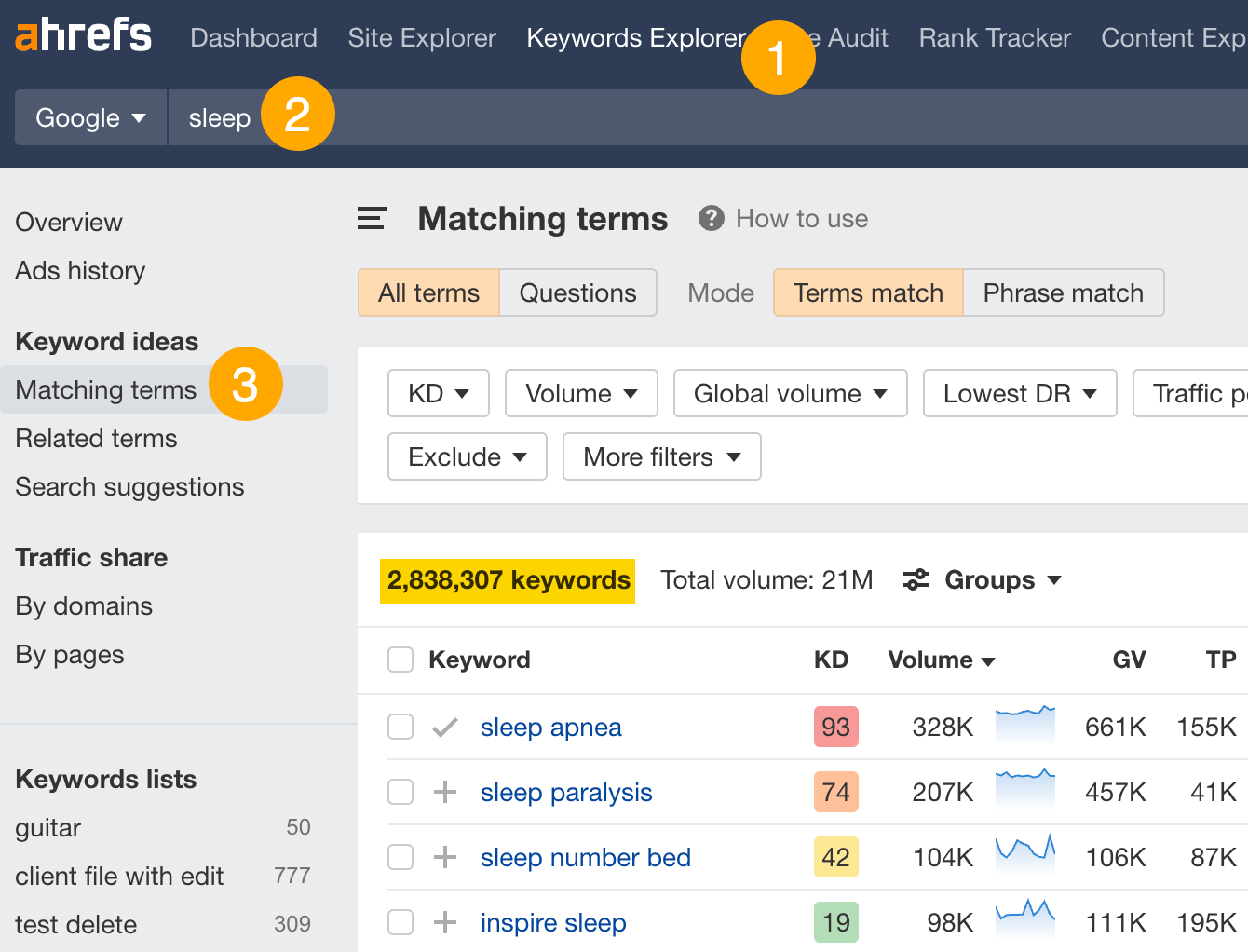
Go through the list and look for relevant keywords you could cover. For example, this keyword would be perfect for a mattress company:

2. Match search intent
Google only wants to rank relevant content. And most people are usually looking for one of these types of content when they search Google:
- Blog post
- Video
- Product page
- Category page
- Tool
So if you want to stand the best chance of ranking high in search engines, you need to align with search intent.
You can find this out by looking at the top-ranking pages.
For example, if we look at the SERP overview for “how to sleep better,” we can see it’s mostly list-based blog posts:

That’s what we have to create if we’re targeting this search term.
3. Create a data-driven outline
Every topic naturally generates subtopics. The more relevant subtopics you cover, the more likely you’ll rank for more keywords and get more traffic.
You can find these subtopics by looking at the common keyword rankings among the top-ranking pages. This is also a good way to build your blog post outline.
Here’s how to find these subtopics:
- Go to Ahrefs’ Keywords Explorer
- Enter your target keyword
- Scroll to the SERP overview
- Check a few of the top-ranking pages
- Click Open in and choose Content gap

This opens up the Content Gap report, where you’ll see the common keyword rankings among these pages. Look through the results to see if there are any subtopics you can cover.
For example, if we’re creating content for the topic “how to sleep better,” these may make good H2s:
- How many hours of sleep do you need
- Sleep hygiene
- Sleep hours by age
- How to get deep sleep
- Tips for falling asleep

4. Make your content stand out by giving it a unique spin
Links are an important Google ranking factor. If your content is like everyone else’s, then there’s no reason for anyone to link to you instead of others.
SEO copywriting is a balance between giving searchers what they want and saying something unique and original.
One way to add a unique spin is to write from personal experience.
Searchers want real-world, tried and tested tips and advice, not generic ones. Google understands that too. That’s why it introduced E-E-A-T, where the first “E” stands for experience.
So if you want to give sleep tips, try them out first before writing about them. For example, when I wrote about being a content creator, I wrote it from my experience.
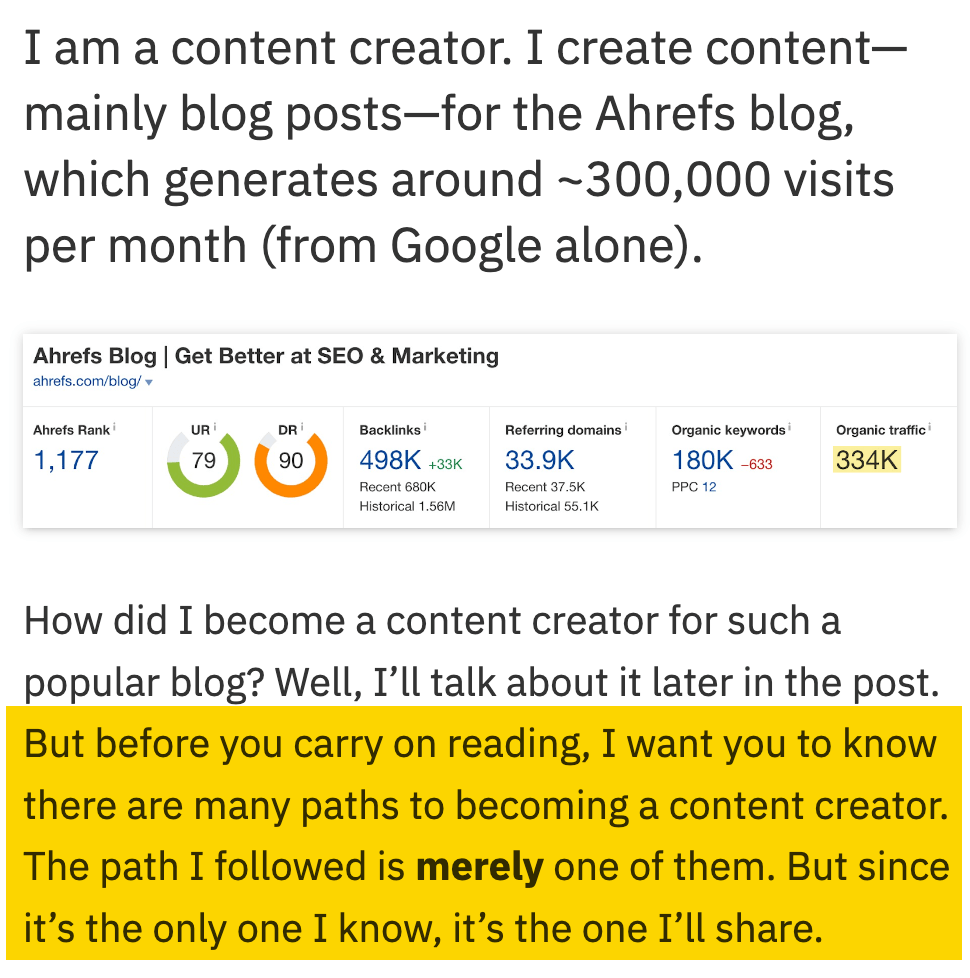
5. Get to the point with the “inverted pyramid” method
Some people just want to know what the best non-stick pan is. So Wirecutter gives it to them:

For everyone else, there is more context ahead.
This format is known as the inverted pyramid, where you give the essential before the rest:
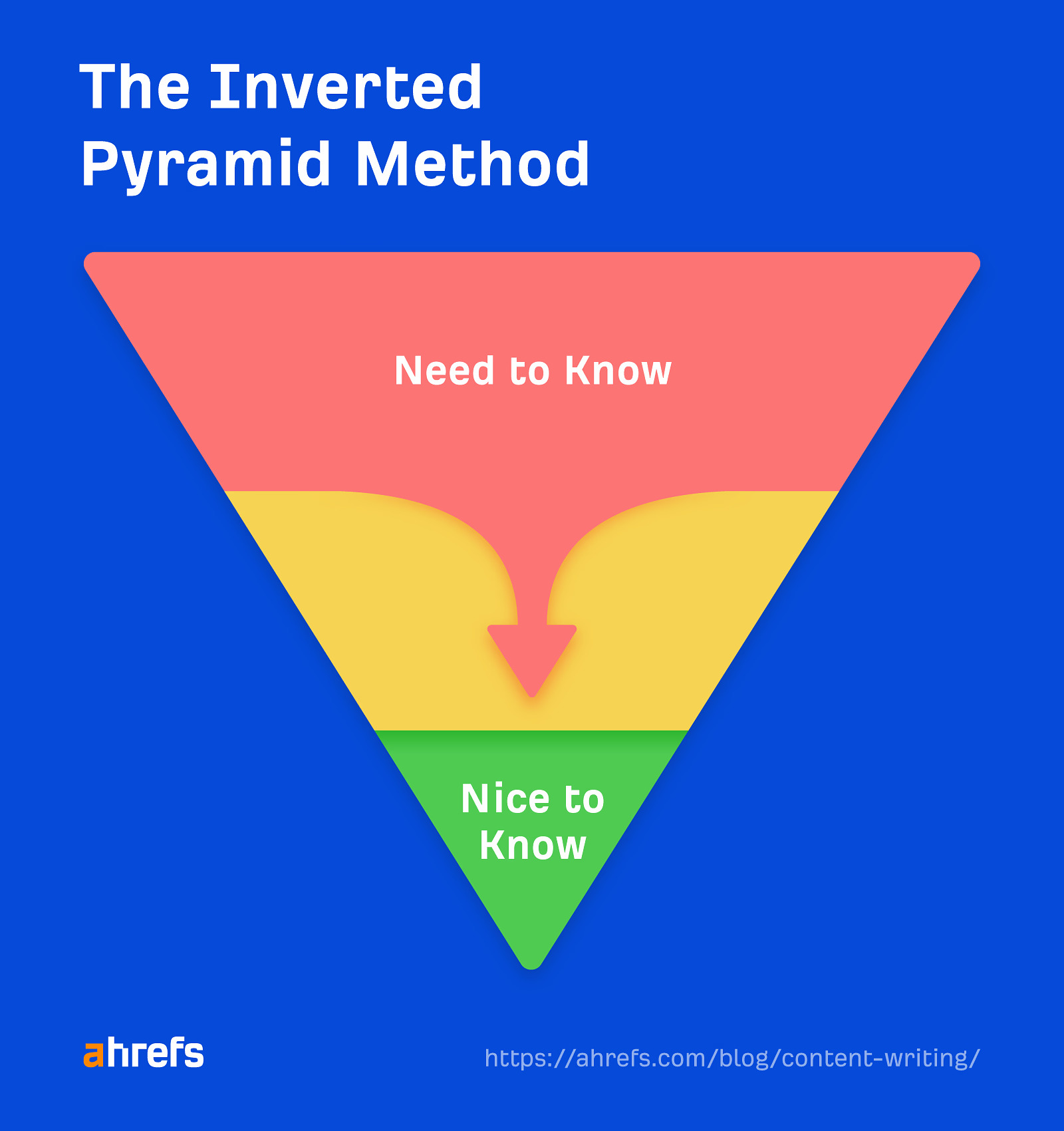
From an SEO perspective, giving readers what they want immediately may help reduce pogo-sticking and improve dwell time.
For example, I defined “digital content creation” immediately in my post:

6. Establish proof and credibility
Google knows that people want to learn how to lift from a personal trainer, not a random dude from the streets.
That’s why Google introduced E-E-A-T, with the second “E” standing for expertise. While not direct ranking factors, Google’s human quality raters use them to assess the quality of search results.
So the important thing is to establish proof that you know what you’re saying. For example, Wirecutter’s articles include a section on “Why you should trust me”:

If you do not have the required expertise for your target keyword, interview someone who does. That’s what we did when we wrote a blog post about Google penalties:
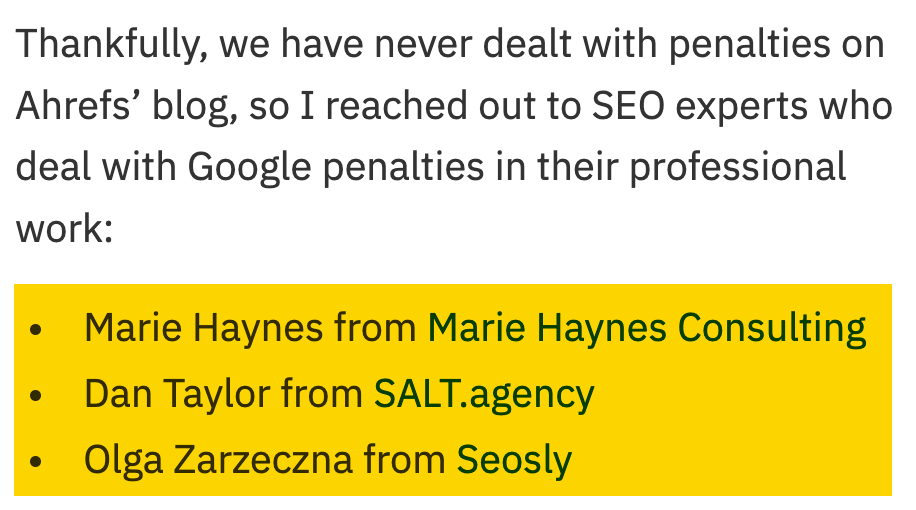
Here’s how to find experts if you’re not sure who to reach out to:
- Go to Ahrefs’ Content Explorer
- Enter your target keyword
- Go to the “Authors” tab
This will show you a list of authors who’ve published content about the topic.

Stage 2. Drafting
This stage’s about putting fingers to keyboard and getting the words out. In short: Start writing. Every writer will have their own style, but SEO copywriters usually have the same goals: create high-quality content that educates, entertains, and delights readers while leading them closer to conversion.
Here are a few SEO copywriting tips you can use:
7. Hook readers in with the PAS formula
Your intro needs to hook readers in and get them interested in reading the rest. You can do this with the Problem-Agitate-Solution (PAS) formula.
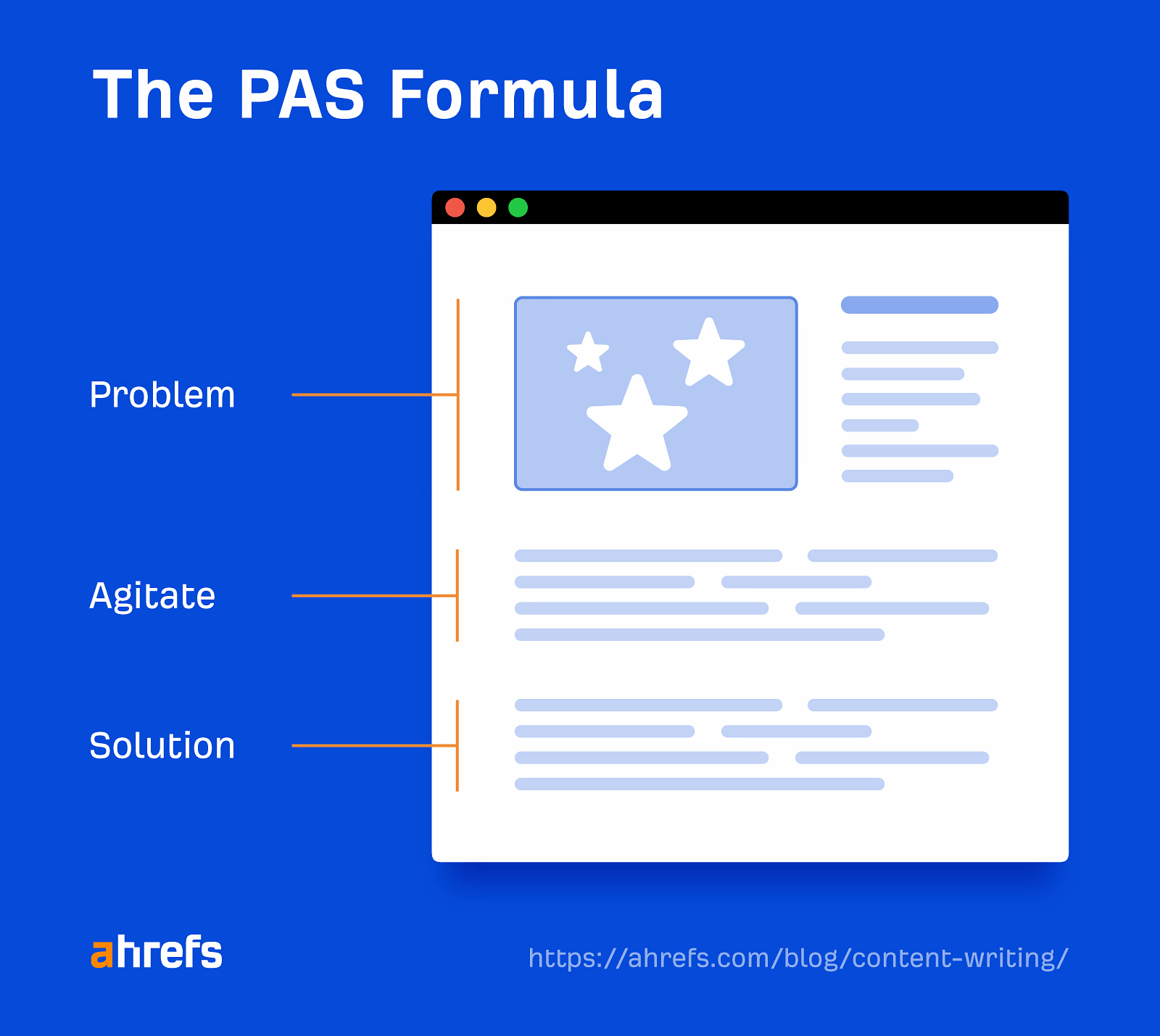
First, you define the problem:

Then, you agitate it:

Finally, reveal the solution:

8. Use “bucket brigades” to keep readers reading
Bucket brigades are transitional words and phrases that encourage readers to keep on reading. They leverage curiosity by intentionally leaving things unresolved.
Here are examples from my own writing:


Check out this post for more bucket brigade examples to use.
9. Make your content even more helpful by adding an FAQ section
People naturally get more curious as they research a topic. They may have tons of related questions. But it can be difficult to answer all of them without breaking the flow of your article.
To solve this, create an FAQ section. Answering popular questions on your page can help you rank higher for long-tail keywords. For example, that’s what we did in our post on H1 tags:
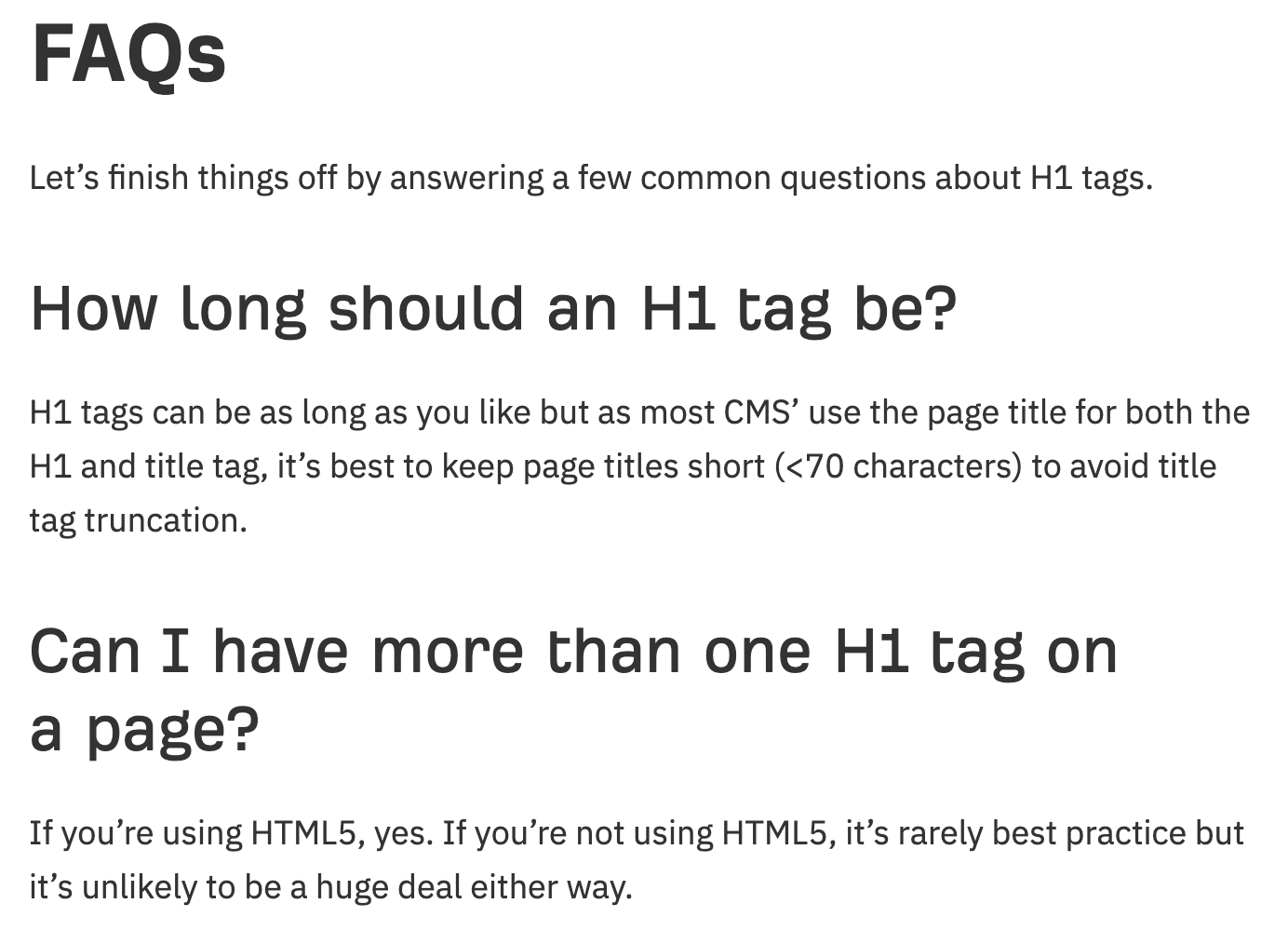
Because we answered a common question, we now rank on Google when people are searching for this answer:

Here’s how to find frequently asked questions to answer:
- Go to Keywords Explorer
- Enter your topic
- Go to the Matching terms report
- Toggle to “Questions”

Stage 3. Editing
The final stage is about improving your draft and making sure what you’ve written is what you want to say.
Here are some tips:
10. Optimize for featured snippets
Featured snippets are quick answers in search results that Google pulls from a page ranking in the top 10.

You can shortcut your way to the top if you “capture” the featured snippet. So plan for it by checking if a featured snippet exists for your main keyword—and what is required to win it.
For example, if we search for “marketing funnel,” we see that Google shows a definition:

If we want to capture this, we’ll have to include a definition, which we did:
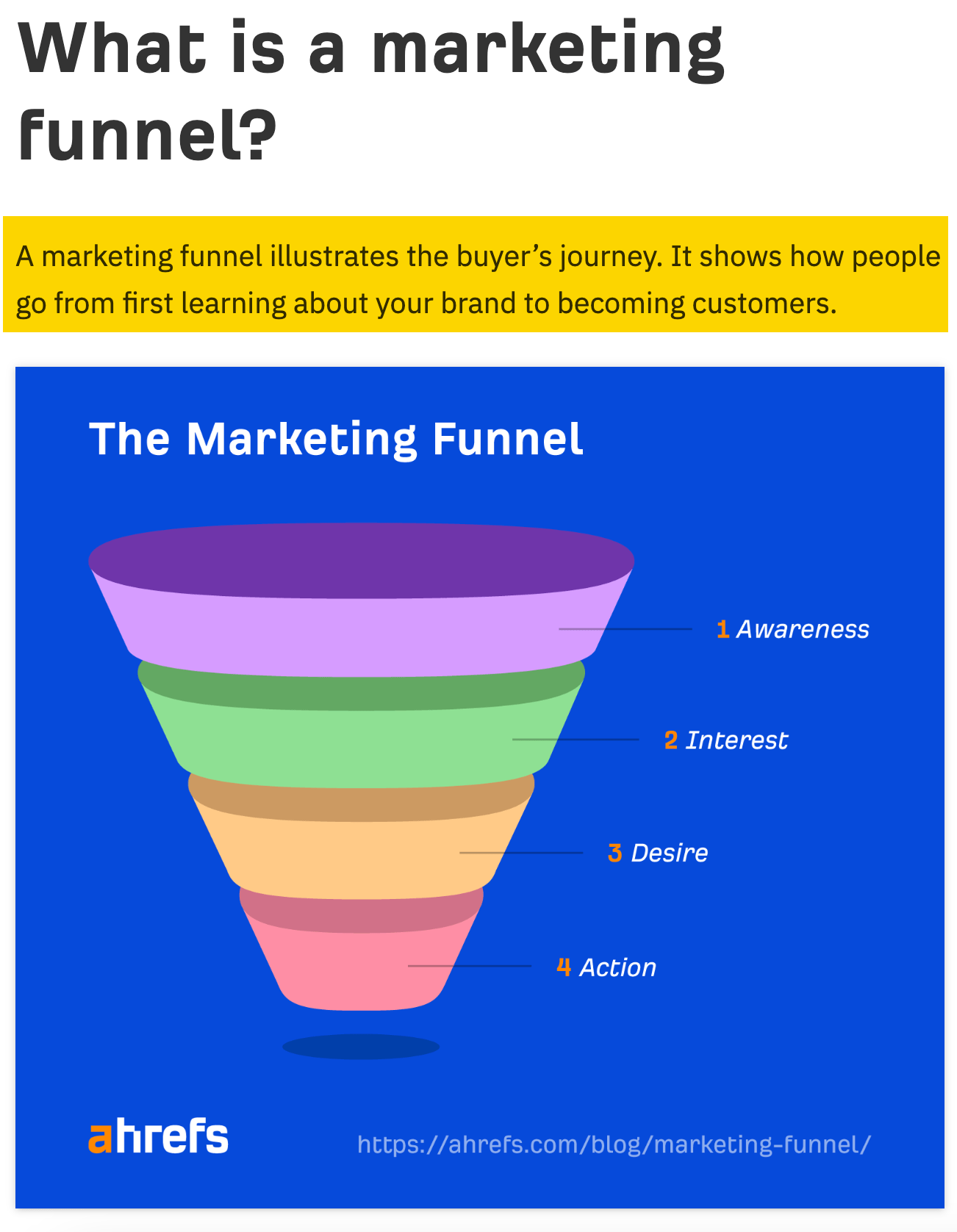
11. Write how you speak
Nothing screams “stop reading” more than dry copy, corporate speak, and meaningless jargon. Complex language alienates readers and drives them back to the SERPs.
Good web copy is casual. So imagine that you’re conversing with a friend over the web.
If you’re worried your SEO copy sounds too uppity, paste it into Hemingway:

It’ll give you a readability score and suggestions on how to improve.
12. Make reading easy by editing with the ASMR formula
Reading is a transaction. Your readers are trading their time for your words. If it’s a chore to read, they’ll hit the “back” button.
So make sure your content is comfortable to read. You can do so by following the ASMR formula.
First, add annotations. Including elements like sidenotes, quotes, and social media embeds can break up the monotony:
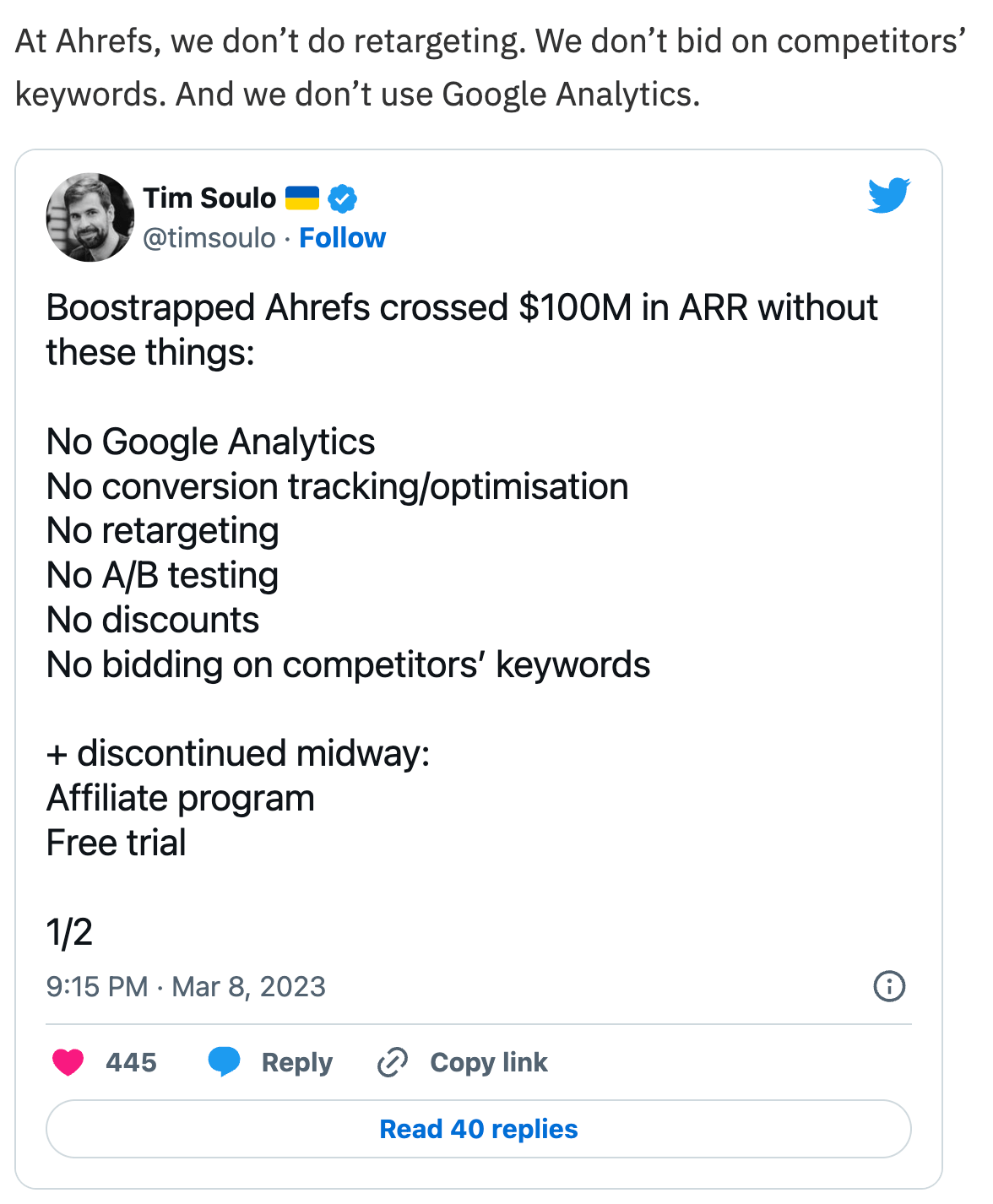
Next, use short sentences and paragraphs. Break up long sentences with transitional words (e.g., “and,” “that”) into short sentences instead.
Third, include multimedia. Inserting videos, images, and GIFs can illustrate your points without adding extra words—like this flowchart:

Finally, read your copy out loud. This pinpoints areas where your content doesn’t flow smoothly.
These extra SEO copywriting tips can help elevate your content.
13. Include a table of contents
Your reader wants to know if your content fulfills what they’re looking for. You can help them do that by adding a table of contents (ToC):

This allows them to navigate to their desired section. Once they’ve started reading, they may be sucked into your copy and read the rest of your content.
Adding a ToC may also create sitelinks for your page, which Google sometimes shows in the search engine results:
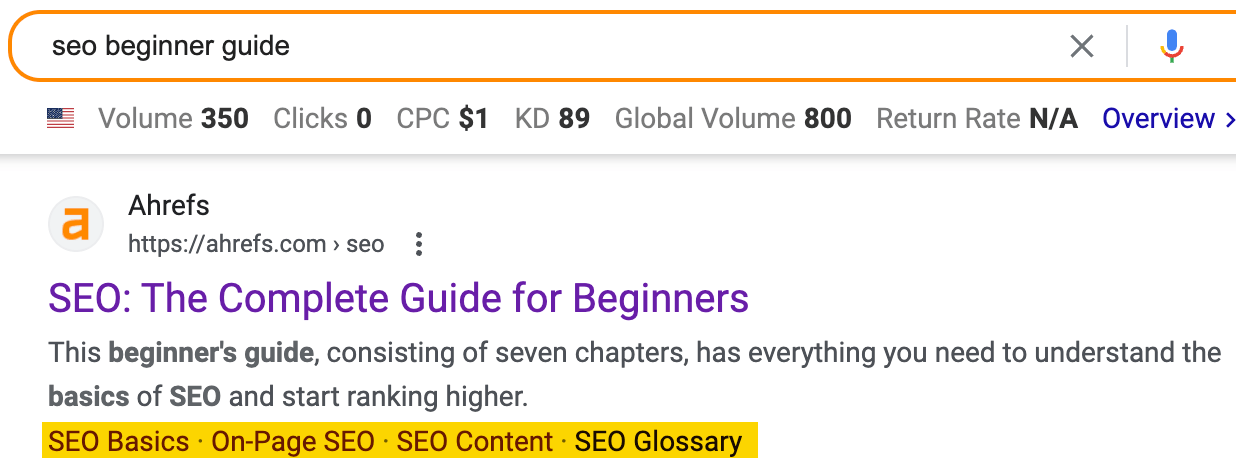
This can potentially lead to more clicks.
14. Get more clicks by crafting compelling title tags
The title tag is one of the first things a searcher will see. So it needs to compel them to click.

The easiest way to create enticing title tags is to use our free title tag generator. Add a prompt, choose a tone, and click “Generate Title”:

You’ll get a title tag suggestion, which you can improve:

Tools are your friends in SEO copywriting. They help you create content more efficiently. These are our recommended SEO copywriting tools:
- Ahrefs – SEO tools that’ll help you research keywords to target, find content ideas and content gaps, discover people to reach out to, research your competitors, track your rankings, and more.
- Google Search Console – See if you’re ranking for your target keywords and generating organic traffic.
- Ahrefs’ free AI writing tools – A collection of AI-powered copywriting tools that can help generate ideas for outlines, paragraphs, title tags, meta descriptions, and more.
- Grammarly – Fix grammar mistakes, improve your clarity, and better your writing.
- Hemingway – Simplify your content and improve your content’s readability.
- ChatGPT – Create outlines and content briefs, proofread your SEO content, generate title tags and meta descriptions, find long-tail keywords and more.
Here’s a commonly asked question about SEO copywriting:
What is the difference between SEO writing, SEO copywriting, and copywriting?
SEO writing and SEO copywriting are the same thing. Copywriting is using words to persuade someone to take action, such as making a purchase or signing up for a newsletter.
Final thoughts
Content writers and content marketers, take note: SEO isn’t only about better rankings on Google. It’s also about getting your readers to read, share, and link to you.
That’s why SEO copywriting is important. Nobody is going to read a garbage piece of content—no matter how high it ranks.
Got any questions? Holla at me on Twitter or Threads.



